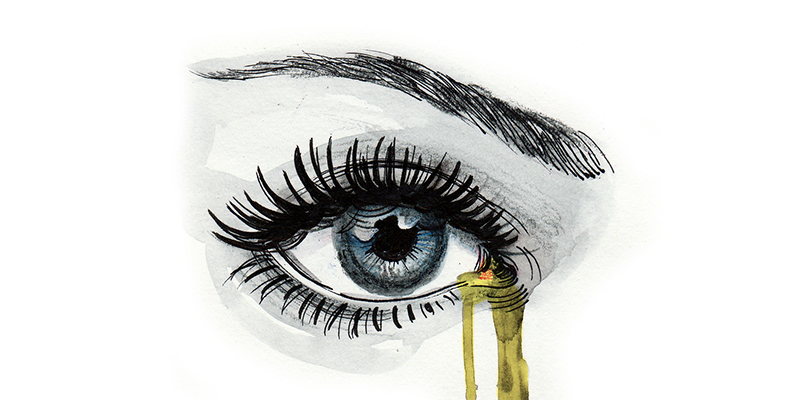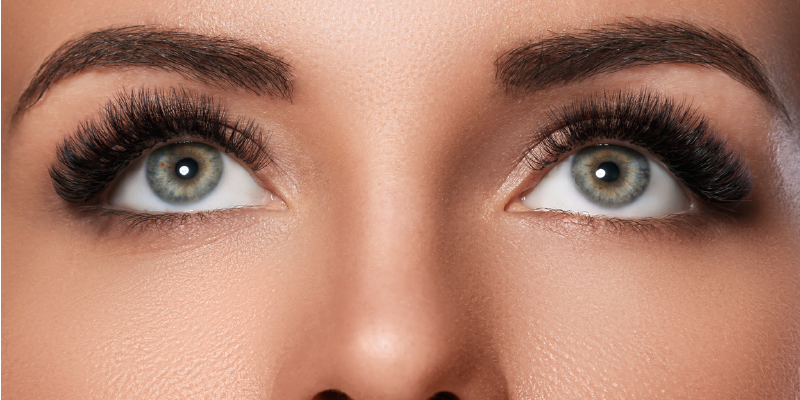At first, the idea of millions of tiny living organisms setting up shop on the surfaces of your eyes and eyelids might sound a little creepy. But the truth is that without these microorganisms, our eye health would plummet. In fact, there are tons of different species of microorganisms that inhabit just about every inch of our bodies, from our hair to our skin to our eyes to our gut. No matter which microbiome you’re talking about, the key is to maintain a healthy balance of so-called “good” bacteria by limiting the “bad” bacteria. Here’s what you need to know about the microbiome of your eyes.
What Is a Microbiome?

The term “microbiome” simply refers to the complex group of microorganisms that inhabit a given space. For instance, the microbiome of your eyes includes any living organisms, whether good or bad, that can be found on the corneal surfaces of your eyes, inner and outer surfaces of your eyelids or on your eyelashes and in their follicles. For the most part, these organisms inhabit our skin, eyes and gut without our notice. However, problems can arise when the ratio of good to bad organisms in this space is thrown off, which can happen for a number of reasons. Some possibilities include the foods we’re eating (or not eating), chronic diseases such as rosacea and blepharitis, using harsh chemical ingredients in the eye area and leaving contact lenses in the eyes for too long [1].
So What’s Living on My Eyes?

It’s likely that researchers don’t yet know every type of microorganism that could be inhabiting your eyes and eyelids. However, recent research has discovered that there are 12 primary genera of bacteria that account for roughly 96 percent of the bacteria in the ocular microbiome [2]. These genera are: Pseudomonas, Propionibacterium, Bradyrhizobium, Corynebacterium, Acinetobacter, Brevundimonas, Staphylococci, Aquabacterium, Sphingomonas, Streptococcus, Streptophyta and Methylobacterium [2].
Certain strains of bacteria or microbes (for instance, demodex) that exist in the occular ecosystem have a higher likelihood of causing negative effects when their population is not controlled. Along the same lines, it is possible that the bacteria found in the ocular microbiome serve a beneficial purpose: to help keep the eyes protected from harmful bacteria that could otherwise cause a whole slew of eye problems, including dry eye syndrome, blepharitis and conjunctivitis [2].
In addition to being home to a variety of different kinds of bacteria, the microbiome of your eyes also includes a specific type of microscopic mite called demodex. Virtually everyone has some amount of these demodex mites currently living at the base of their eyelashes and on their skin. However, for some people, the numbers of demodex mites are much greater than for others. This demodex infestation has been linked with rosacea, ocular rosacea and blepharitis, a chronic inflammatory condition that affects the eyes [3]. Thus, while demodex mites themselves are not necessarily harmful, an overpopulation can cause symptoms such as dry, red and irritated eyes, as well as red, flushed skin.
Maintaining a Healthy Eye Microbiome

The good news is that many of the most common eye problems can be alleviated by taking steps to maintain a healthy ocular microbiome — one that allows beneficial bacteria to flourish while simultaneously keeping bad bacteria and mite populations to a minimum. One of the most effective ways to do this is to use a gentle eyelid cleansing product such as Cliradex Light Foam at least once daily. Cliradex products have been developed using isolated 4-Terpineol, the most efficient ingredient for eliminating demodex mites while remaining gentle on the skin and eye area [4].
Any time you use a personal care product near your eyes, make sure it has been designed specifically for that purpose. Otherwise, harsh, irritating ingredients in other products could throw off the balance of your eyes’ microbiome and trigger uncomfortable side effects such as dryness, redness and itching.
[1] The Scientist
[2] Yale Journal of Biology and Medicine





